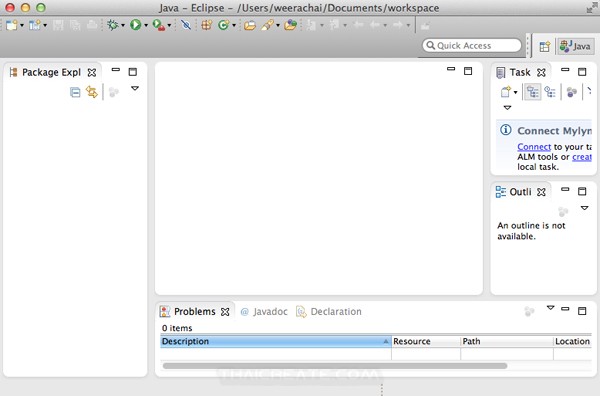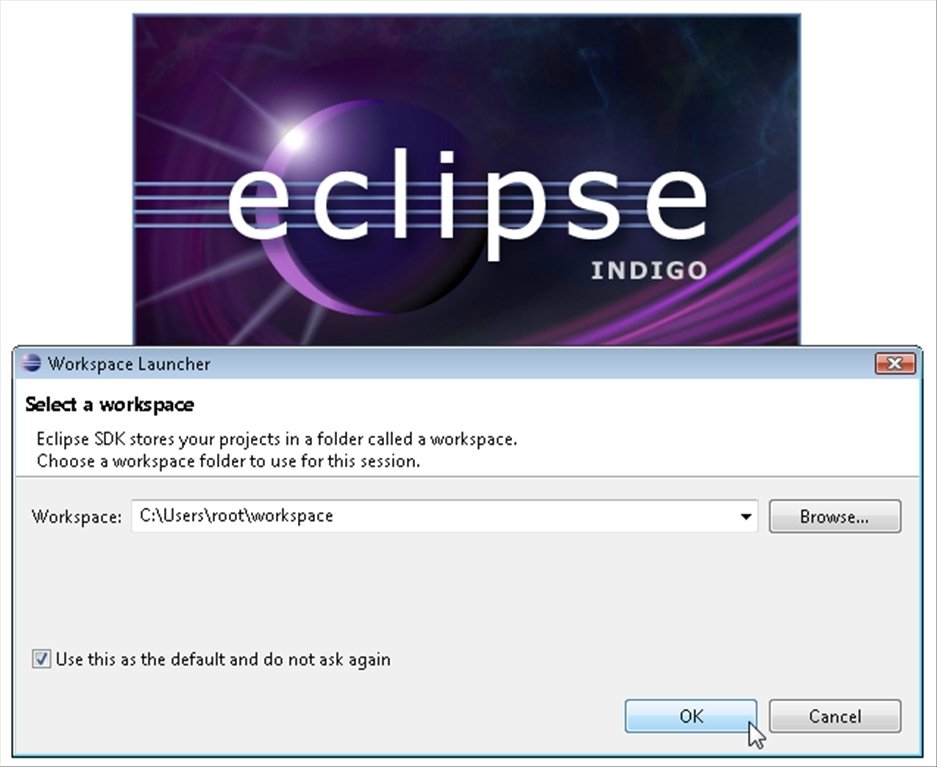
- #Eclipse for mac java 6 install#
- #Eclipse for mac java 6 zip file#
- #Eclipse for mac java 6 windows 7#
- #Eclipse for mac java 6 download#
- #Eclipse for mac java 6 free#
#Eclipse for mac java 6 zip file#
zip file that you downloaded using Windows Explorer (or on your desktop, if you saved it there). Instead, you'll need to do a few things on your own in order to get it installed.
#Eclipse for mac java 6 install#
Start by downloading this be sure that you get the Windows version and not a version intended for a different operating system.Įclipse is distributed as files in a Zip archive and, unlike most software you install on Windows, has no installation program. For our work in this course, I'm expecting you to use Eclipse Classic 3.7.2. So the first thing to know is which distribution to download.
#Eclipse for mac java 6 download#
There are several different distirbutions of Eclipse available for download at, each geared toward users with different kinds of needs: Java programming, web development, and so on. If you're using javac and java from the command line, you will need to bring up a new Command Prompt window, in order for these changes to take effect.Īt this point, your Java installation is ready to go you're now ready to proceed to installing Eclipse. button, specifying CLASSPATH as its name, and the following value: If it doesn't exist (and it probably won't, if you've never used your system to develop Java code), click the New. Once you've brought up the environment variables, find the PATH variable listed under "System variables" and add this to the end of it: On Windows XP and 2000, right-click the My Computer icon on your desktop and select Properties. Click the Advanced System Settings link, then click the Environment Variables.
#Eclipse for mac java 6 windows 7#
On Windows 7 and Vista, click the start orb in the lower-left corner of the screen, move your mouse over Computer, right-click, and select Properties from the pop-up menu. How you get to these environment variables is slightly different on different versions of Windows. So, to make the JDK work, you have to modify the PATH and CLASSPATH environment variables on your system, so that Windows will be able to find javac and java, and so that javac and java will be able to find all of the necessary Java classes. CLASSPATH is a list of folders, separated by semicolons, in which the Java compiler or virtual machine will look for a Java class whenever it's trying to find one. This is the job of the CLASSPATH environment variable. Similarly, whenever the Java compiler or Java virtual machine need to be able to use a Java class (such as when you import a class from the Java library), the compiler or virtual machine needs to be able to know where to find it. PATH is a list of folders, separated by semicolons, in which Windows will look for a program whenever you try to execute one. This is the job of the PATH environment variable. But there's a catch: Windows has to know where it can find these programs.

You can execute programs from a Command Prompt by simply typing their names, such as javac or java. The (not all that) hard part: PATH and CLASSPATH The reason for this suggestion is that the next steps in the installation process will be simpler if the folder you choose has a shorter name that, importantly, has no spaces in it.
#Eclipse for mac java 6 free#
(And, of course, you can feel free to install to a drive other than C:, if you have more than one.) I suggest changing it to the following folder instead: When asked what folder you should install the JDK into, the default will be: However, after running the installation program, you still won't be able to execute javac or java, without making a couple of modifications "under the hood" of your system. The JDK includes an installation program, which places all of the files into the appropriate places and sets up some shortcuts for you.

It's best to download the JDK and not the JRE - the difference is that the JDK includes a Java compiler ( javac) and a variety of other tools for building and packaging-up Java programs, while the JRE (the Java Runtime Environment) includes only the necessary tools to allow you to run Java programs. A great option is to download the Java SE 7u3 JDK from Oracle's Java SE Downloads page. What you'll need to get started is a Java compiler and Java virtual machine, both of which must support Java 7.


 0 kommentar(er)
0 kommentar(er)
